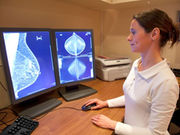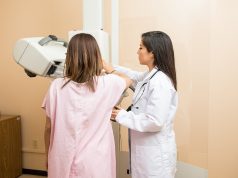Both automated and clinical assessments of breast density are associated with breast cancer risk
MONDAY, May 23, 2016 (HealthDay News) — There is moderate correlation for automated and clinical assessments of breast density, according to a study published in the June issue of Radiology.
Kathleen R. Brandt, M.D., from the Mayo Clinic in Rochester, Minn., and colleagues evaluated 1,911 patients with breast cancer and 4,170 matched controls who underwent mammography. Digital mammograms were retrieved at a mean of 2.1 years before beast cancer diagnosis, and they generated the corresponding clinical Breast Imaging Reporting and Data System (BI-RADS) density classifications, as well as Volpara and Quantra density estimates.
The researchers observed moderate agreement between clinical BI-RADS density classifications and Volpara and Quantra BI-RADS estimates (κ = 0.57 and 0.46, respectively). There were differences of up to 14 percent in dense tissue classification, with Volpara, Quantra, and BI-RADS classifying 51, 37, and 43 percent of women as having dense breasts. Similar breast cancer associations were seen for clinical and automated measures: For extremely dense versus scattered fibroglandular densities, the odds ratios were 1.8, 1.9, and 2.3, for Volpara, Quantra, and BI-RADS classifications, respectively. Better discrimination of case status was seen for clinical BI-RADS assessment versus Volpara and Quantra BI-RADS classifications (C = 0.60 versus 0.58 and 0.56, respectively).
“Automated and clinical assessments of breast density are similarly associated with breast cancer risk but differ up to 14 percent in the classification of women with dense breasts,” the authors write.
One author disclosed financial ties to Gamma Medica.
Full Text (subscription or payment may be required)
Copyright © 2016 HealthDay. All rights reserved.








